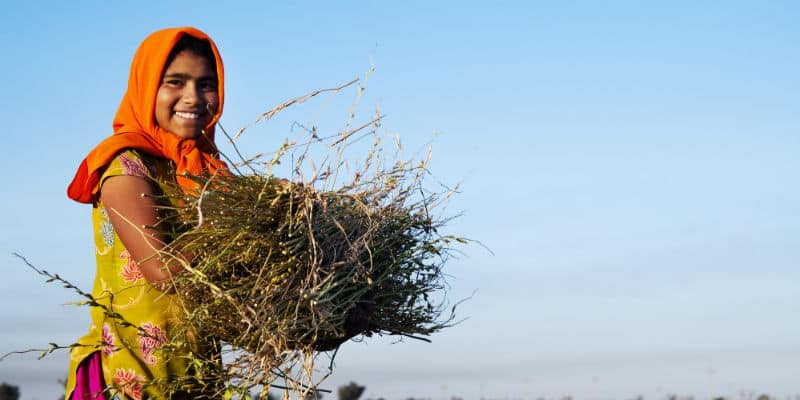I am a firm believer that extreme poverty can be ended in my lifetime, and with the right steps, prosperity can take its place. But overcoming such an overwhelmingly large and complicated challenge is no small task, and will require a coordinated effort between entrepreneurs, governments, researchers, and development organizations. if there’s one development organization that can lead the way, it’s the World Bank.
The World Bank is a behemoth. Its more than 12,000 projects worth approximately $46 billion dwarfs the national budget of many countries (for example, Croatia’s government spent roughly $27 billion in 2017 while Nigeria’s spent $22 billion). In addition to supplying financial assistance to many low- and middle-income countries, the Bank also provides a wealth of poverty and macroeconomic data, all in an effort to end extreme poverty and create shared prosperity.
The World Bank is also uniquely positioned to leverage the power of Disruptive Innovation through targeted investments. Disruptive Innovations transform markets by making products and services simple, affordable, and accessible to millions of people (and in some cases, billions) who historically did not have access, ultimately enabling them to steal market share from industry leaders. This not only creates significant economic prosperity, but also improves the standard of living for so many people in the world.
For example, Disruptive Innovation can play a significant role in improving the health of women starting in India. In 2016, the National Family Health Survey in India reported that as many as 62% of women in the country lack access to affordable menstrual hygiene, and in some regions, more than 80% use unhygienic cloths during their menstrual cycle. This practice not only poses health risks for young girls and women, but it also adversely impacts their quality of life with many adolescent girls missing school or dropping out altogether because of it. As with most issues, the poorest and most vulnerable are those who suffer the most.
The conventional approach to solving this problem would be to start a nonprofit organization, partner with existing sanitary pad companies, and get them to donate products, perhaps as part of their Corporate Social Responsibility. This could even grow into a national program supported by the government. Such an approach might indeed make a difference, but its impact would be limited, and sustainability would rest entirely on the corporate partner’s involvement.
Alternatively, investing in Disruptive Innovations that address the issue would be far more impactful. For instance, the Bank might consider funding the work of Indian entrepreneur Arunachalam Muruganantham, who created a simple machine that can manufacture a sanitary pad for less than a third of the cost of existing pads on the market. Muruganantham primarily sells his low-cost machines to NGOs and women’s self-help groups, where women are able to learn how to use the machines in just three hours, and are also able to start their own small businesses. For every machine sold Muruganatham’s innovation reaches 3,000 first-time users of sanitary napkins, and while providing employment for 10 women.
Muruganantham’s innovation contains several characteristics that indicate it could be disruptive. In addition to making pads affordable, it targets people who cannot afford existing sanitary pads on the market. It’s also not as “good” or feature-rich as existing products, enabling his innovation to avoid direct competition with industry leaders like Cotex and Vella who won’t feel threatened by it. Over time, as it improves, it is likely to pull customers—who favor affordability and are currently overserved by existing offerings—away from these leaders, thus transforming the entire market. Muruganantham stands to make sanitary pads more accessible to millions of women, with the added bonus of providing employment to more than one million women in just India alone.
In contrast to the conventional “free pads” approach that’s dependent on the funds of a benevolent donor organization where funds might dry up or priorities may change, Muruganantham’s innovation is creating a new and vibrant market that has the potential to sustain itself, as most markets do. Instead of relying on donor support, the new market is focused on providing an affordable product that customers need, a fundamentally different strategy.
By aggressively supporting more entrepreneurs like Muruganantham who are focused on creating affordable solutions for the world’s most vulnerable, the Bank can significantly impact, albeit indirectly, the health and education outcomes of the people it serves. But for the Bank to capitalize on the impact of Disruptive Innovation, it will have to reallocate its resources to create room for experimentation and to fund smaller projects.
Currently the majority of the projects the Bank funds are executed through governments and directed to solve a specific problem in an already defined way; for instance, “provide ‘free’ education for all the children in a particular region.” In addition, the World Bank isn’t set up to fund smaller projects, with many of its projects surpassing $100 million. Because new businesses need to start small, the Bank may wish to take a page out of the USAID DIV program, which was created specifically to fund innovators at different levels of growth.
The entrepreneurial approach taken by Muruganantham to solve a seemingly intractable problem provides a different lens with which the Bank can leverage its power and influence to create prosperity. Disruptive Innovations, which often target people who cannot afford existing products and services, might be the critical missing link in the Bank’s development strategy.



